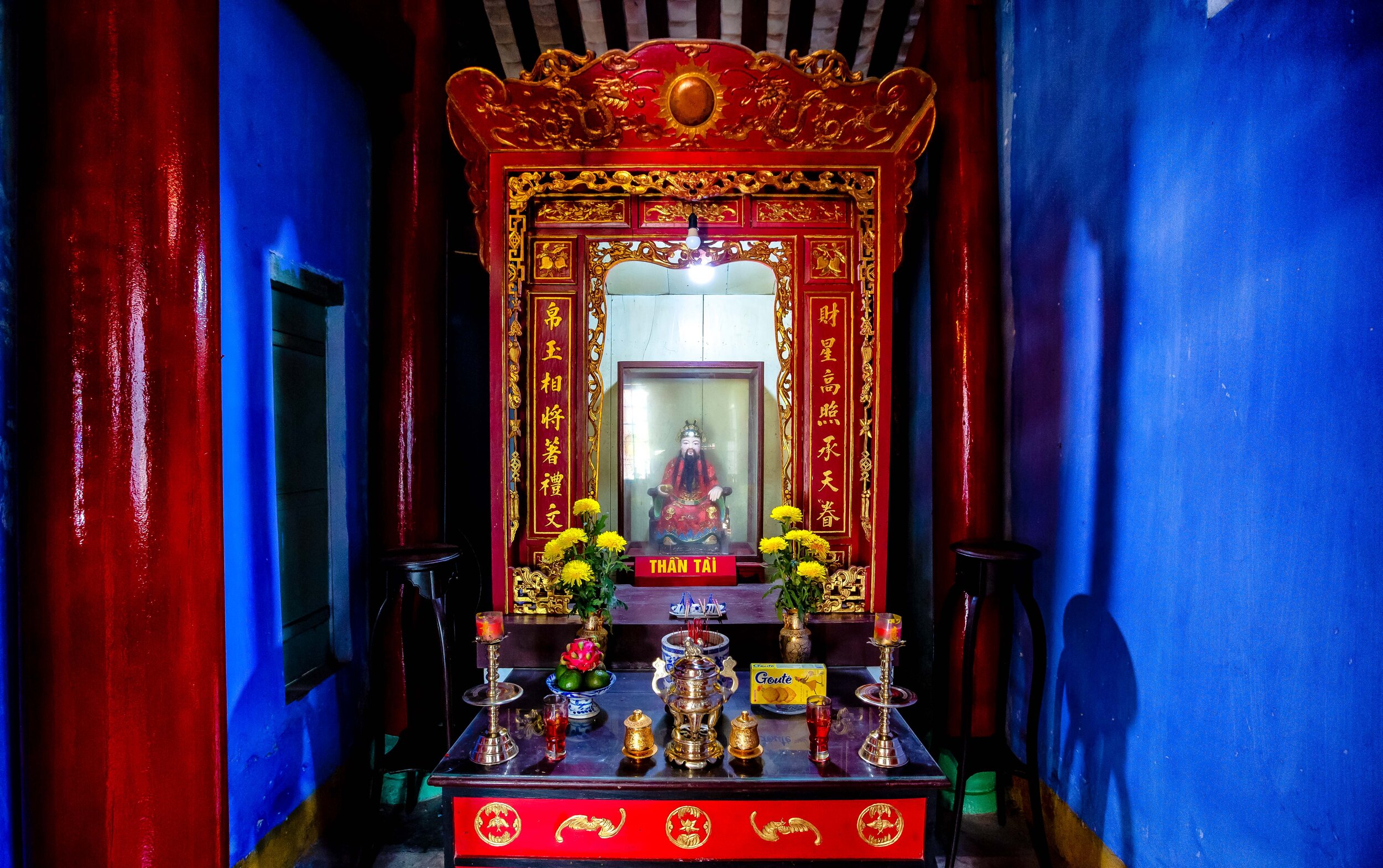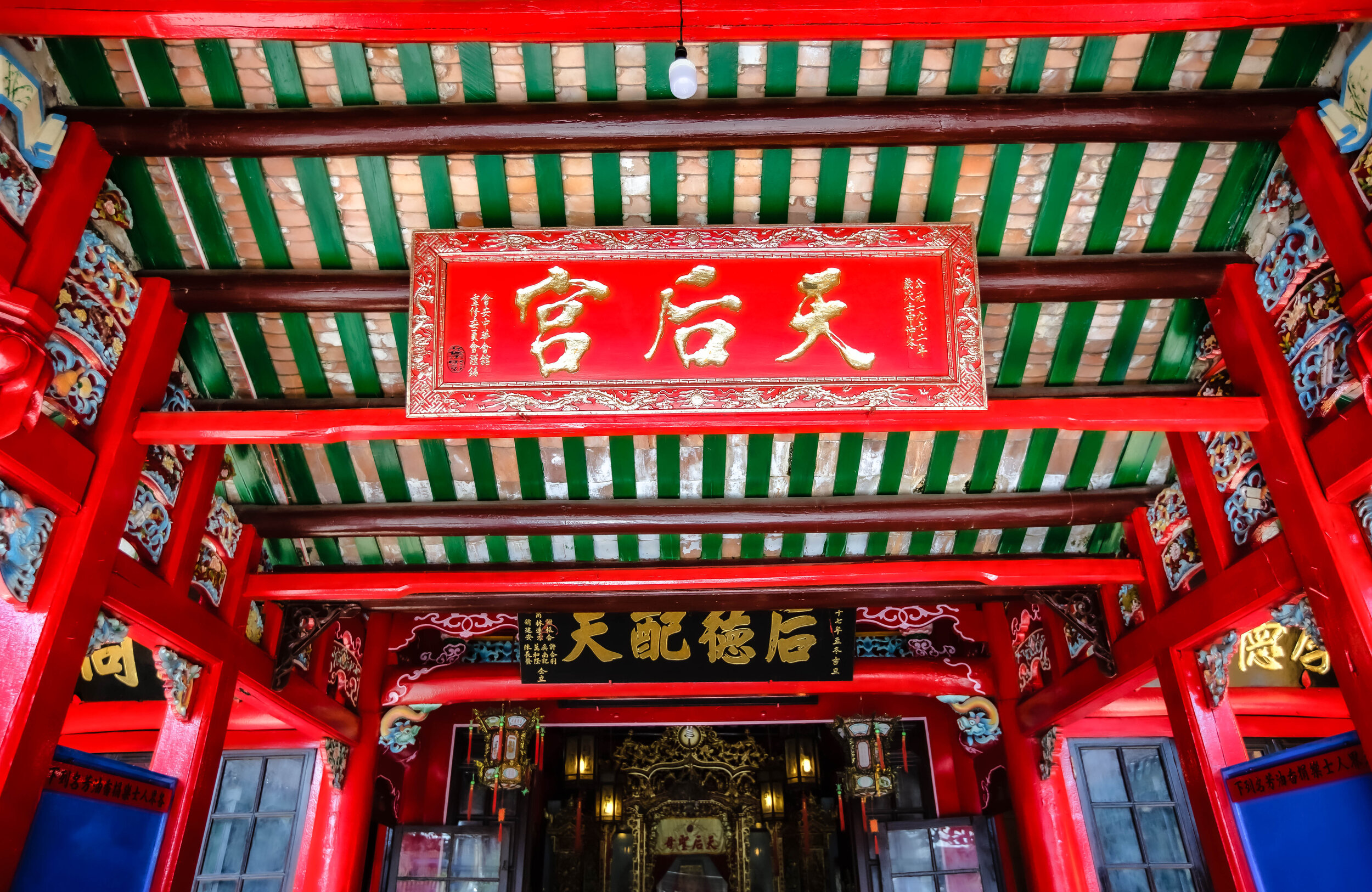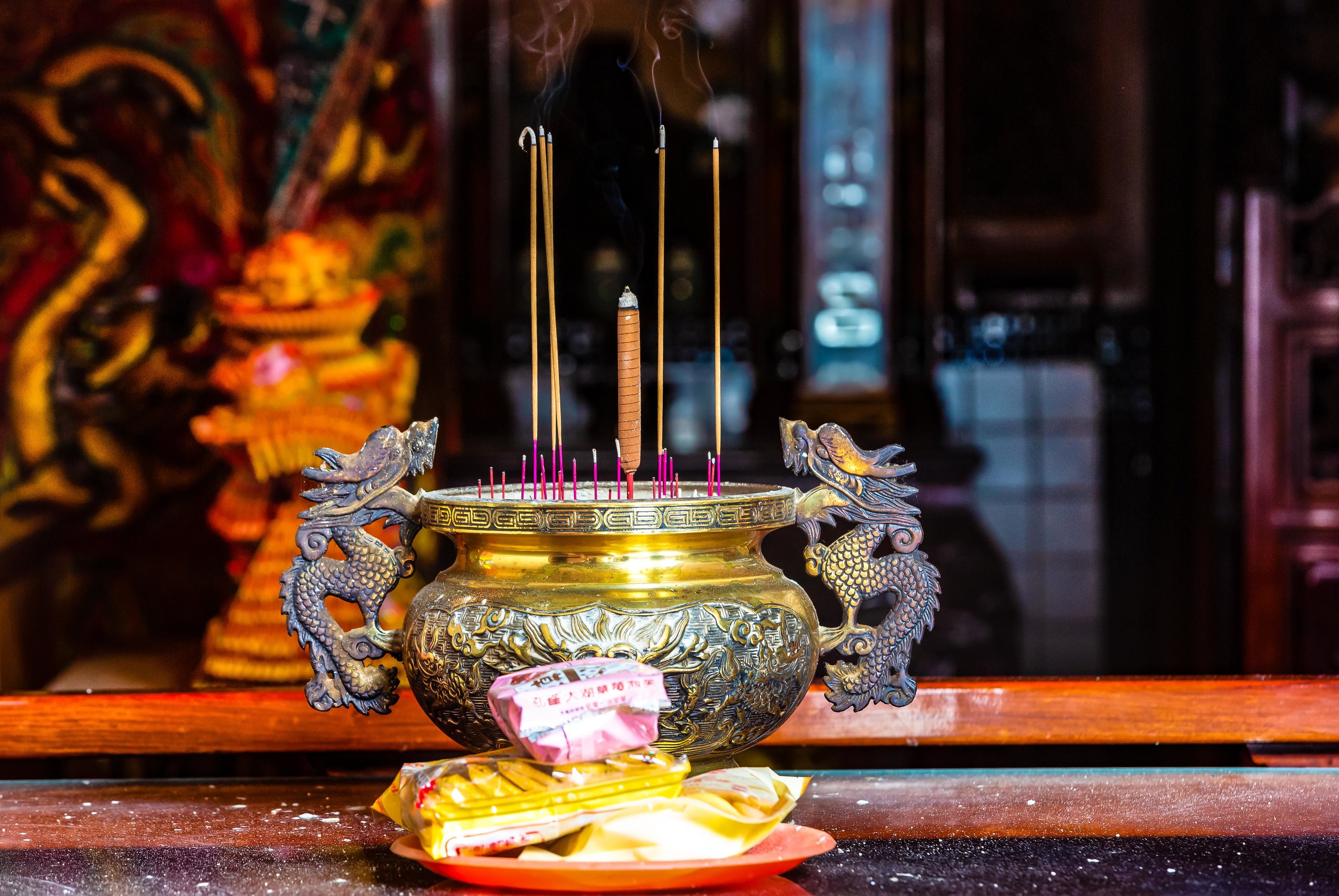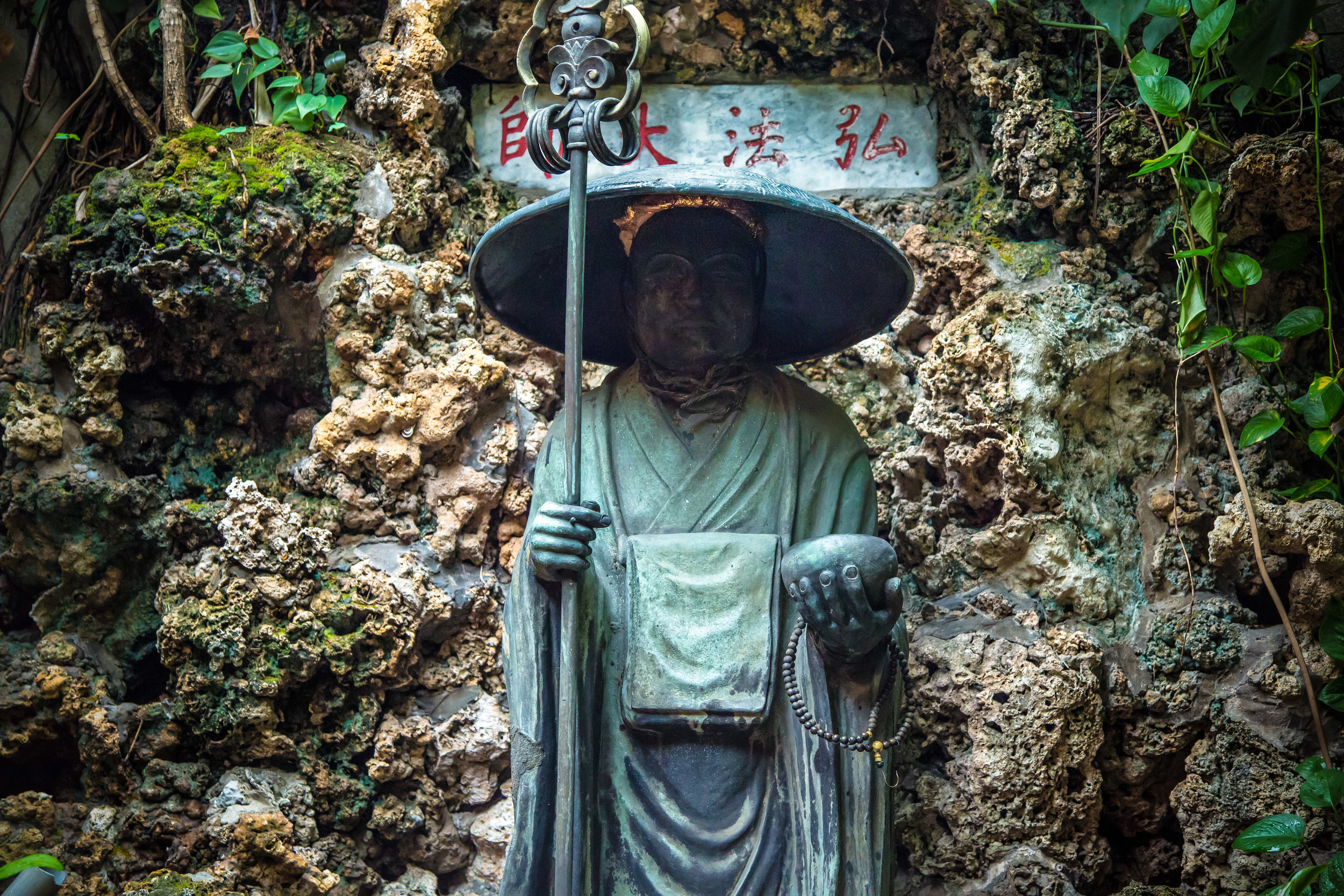Like a lot of nerdy little boys, I watched my fair share of old Kung Fu movies when I was younger.
One of the things I always thought strange (but never really questioned) was why the main character always ended up fighting dozens of people at once. It always seemed so unfair.
Another thing I thought strange was a common theme in a lot of these movies that involved Chinese immigrants randomly calling up friends back home when they were having trouble and requesting a martial arts master come help out.
In Bruce Lee’s Way of the Dragon (猛龍過江) for example, a Cantonese restaurant owner in Rome was having problems with a local crime boss, so he simply called up friends back home in Hong Kong and Bruce Lee suddenly appeared in Rome to help out and kick a bunch of ass.
It wasn’t until recently that I think I actually figured it out.
One of the underlying themes of these movies is the shared sense of ‘community’ and ‘brotherhood’ that Chinese people share with each other no matter where they go. This is one of the reasons why you’ll find a “China Town” in most of the world’s major cities.
For most westerners these areas are simply where you go to find amazing authentic Chinese restaurants. There is however much more to a China Town than just the amazing cuisine that you’ll find as within these areas you’ll often find a tight-knit community where people have worked together, helped each other out and prospered despite all the hardships one faces while living in a foreign land.
When we think of a ‘China Town’ we often think about the large sections of London, New York City or Toronto but few people actually realize that you’ll also find these large Chinese communities scattered throughout Asia as well.
In South East Asia you’ll easily find concentrated communities of Chinese immigrants working together, doing business and celebrating their culture in almost every major city and town thanks to the past few hundred years of trade relations and immigration.
One of the ways that the Overseas Chinese community has been able to stick together throughout the centuries has been through the use of Assembly Halls (會館) where people have been able to hang out, celebrate their culture, network, worship, etc.
The thing about these Assembly Halls is that they were almost always constructed to serve a particular community of immigrants based on where they originally came from. So, even though I made the claim that the people who live and work within the China Town’s around the world are a tight-knit bunch, its also important to realize that the various groups are also often very factionalized and tend to stick to their own.
This is another theme that you might have noticed in Kung Fu movies where rival towns or ethnic groups were constantly battling each other for one reason or another.
So, if you were Cantonese and found yourself in Singapore, you’d probably be spending most of your time with your Cantonese friends and family. The same goes for the Teochew, Hokkiens, Hakka, etc.
This behavior is something that persisted as Chinese immigrant communities grew throughout South East Asia (and the world), so in Hoi An for example, you’ll find Assembly Halls that were constructed specifically for the Cantonese, Teochew, Hokkien and Hainanese people.
The history of Chinese migration to Hoi An though predates all of the Assembly Halls in town by a century or more. So, at a time when there weren’t enough Cantonese people in the area to fund an Assembly Hall, where did people go?
They had to suck it up and go to the ‘All-Chinese Assembly Hall’, of course.
The Chinese Assembly Hall was the first of its kind in town and was constructed by a group of immigrants from various regions of Southern China. These groups set aside their petty differences and came together to build the first network of support where they could count on each other for protection as well as offering a place to get together to do business and worship.
Even though the Chinese Assembly Hall isn’t as popular with tourists as the nearby Fujian or Cantonese Assembly Halls, I personally found a visit to this hall to be one of the most interesting.
Not only is it beautifully designed but it also has a long and interesting history that combines the experience and cultural history of all of the early Chinese immigrants to Hoi An.
It also continues to this day to help educate successive generations about their language and their culture.
Before I start talking about this beautiful hall though, if you’d like to know more about Hoi An or its Overseas Chinese Assembly Halls, I recommend taking a look at my introduction to both:
Trung Hoa Assembly Hall (中華會館)
Hoi An’s first Assembly Hall, the “All-Chinese Assembly Hall” was constructed at a time when Chinese immigration to the area was still a new thing and there weren’t enough people to necessitate the individual halls that would later appear.
Hoi An was a popular port of call for the worlds traders (including the Chinese, the Japanese and the Europeans) who initially only showed up on a seasonal basis. With trade booming and everyone wanting a piece of what Hoi An had to offer, full time warehouses started appearing and the major powers started sending representatives to live in the area year-round.
With so many people from around the world showing up in Hoi An, it was important for the Chinese immigrants to band together to protect themselves as well as network with each other. At that time though there were so few people that it didn’t matter where you came from, you had to get along with each other in order to survive and prosper in business.
In 1715, with funds contributed by people from Fujian, Canton, Hainan, Chaozhou and the Hakka people, construction started on the Assembly Hall, which would be completed in 1741.
It took almost three decades to complete the hall not only due to the fact that it was a large complex but it also included a school to help educate the children of the immigrants who were migrating to the area.
Originally named the Duong Thong Assembly Hall (洋商會館), or the “Overseas Merchants Assembly Hall”, it has also gone by several other names throughout its history:
“Hội quán Ngũ Bang” (五幫會館) - Five County Assembly Hall
“Chùa Bà” (媽祖廟) - Mazu Temple
Interestingly, the hall was not only the first Assembly Hall of its kind in Hoi An, but it was also the home of the first temple dedicated to the worship of the Goddess of the Sea, Thien Hau (天后), who is also named Mazu (媽祖). As the home of the first Heavenly Goddess Temple (天后宮) in Hoi An, the hall was a popular place of worship until the Fujian Assembly Hall a few decades later constructed its own version.
Note: Mazu Worship is predominately a Hokkien (Fujian) tradition that spread throughout Southern China, Taiwan and South East Asia due to immigration.
For quite some time the Assembly Hall was the go-to place for all of the Chinese immigrants and merchants living in Hoi An, but as other halls started to be constructed around town, its significance started to decline. The Hokkiens (1757), Teochews (1852), Cantonese (1885) and Hainanese (1891) constructed halls of their own to better serve the needs of their specific groups.
Despite its waning significance, where the Assembly Hall continued to excel was in its usage as a place of education, especially for the immigrants who made Hoi An their permanent home.
The Chinese Public School, or the Le-Nghia Public School (禮儀學校) continues to this day to be an important educational tool for both Vietnamese and people of Chinese ancestry who come to take nightly or weekend classes to learn Mandarin.
For most of its history, the Assembly Hall remained an important place of worship for the Goddess of the Sea and for public education, but things changed in 1917 when the Qing Dynasty (清朝) was overthrown back China and the Republic of China (中華民國) was established.
From this point on, the hall would become much more political in nature as it was well-known that most of the “Hoa” (華人) people in Vietnam were no fans of the Qing rulers.
Link: Hoa People (Wiki)
In 1928, the hall changed its name to the Trung Hoa Assembly Hall (中華會館) or the “All-Chinese Assembly Hall” and would add a shrine to Sun Yat Sen (孫中山), the “Father of Modern China” (國父) with new decorations on the walls that included some of his quotes.
From then on, the Assembly Hall ceased to represent only the five groups that originally funded its construction, but anyone of Chinese origin.
Even though the Republic of China experience was short-lived in China (the People’s Republic of China was established in 1949), the hall has surprisingly not changed any of the decorations in the interior or (as it would seem) its allegiance to the ideals of the ROC, which continues to exist today in Taiwan.
Design
In terms of the design of this hall, there are some noticeable differences in what you’re going to see compared to the other Assembly Halls in Hoi An.
The most noticeable of those differences is that the hall has recently been given a fresh coating of blue paint on the front gate as well as on the eastern and western wings on the inside.
The blue paint, which is clearly the same colour blue used in the Republic of China flag is shout out to the recent history of the hall and its adoration for Sun Yat Sen.
The thing I personally liked about the color is that it makes the hall stand out from all the other yellow buildings outside while also blending in perfectly with the beautiful blue skies you get in Hoi An.
The layout is similar to what you’ll have seen around town with the traditional Chinese ‘Two Hall’ (兩殿兩廊式) architectural style, which simply means that you’ll find a Front Hall (前殿) and a Main Hall (正殿) with an Open-Air Courtyard (中程) and two covered halls on both the eastern (左護龍) and western (右護龍) sides.
From the outside, the Front Hall isn’t much to look at apart from its bright blue paint job.
When you walk inside you’ll discover that the hall is much larger than it appears, but there still isn’t really very much in terms of decoration, which isn’t entirely a terrible thing. Most notably you’ll find a plaque above the front door that reads: “The World is Equally Shared by All” (天下為公), one of the most popular quotes used by Sun Yat Sen.
Like the nearby Hainan Assembly Hall, this one also features a Worship Hall (拜亭) that is connected to the front entrance of the Main Hall. The “hall” isn’t actually an enclosed room like the others, but a pavilion of sorts that acts somewhat like the front veranda that you’d find on a house.
One of the key features of this addition (in terms of the design) is that it helps to add layers to the roof as its roof is higher than the wings, yet a little shorter than the roof on the main hall.
The interior of the Worship Hall is quite colourful and includes a large traditional plaque that reads “Heavenly Goddess Temple” (天后宮) that was dedicated in 1992. There are also several long benches on either side that provide the perfect spot to hang out and have a chat in the shade on a warm day.
Another one of the key differences in the design of this hall is that the Guardian Dragons (護龍) on the western and eastern side of the building are both open-air halls that were used for gatherings or events. They appear to be longer than they actually are due to the fact that the “Le-Nghia Mandarin Language Centre” (禮義華文中心), has been constructed in the space between the western wing and the front hall.
Both of the wings on either side are large open-air spaces that are largely empty and are used primarily for gatherings or events. You’ll also find rooms to the rear on each of the wings which contain a shrine dedicated to the founders of the shrine and another to the Chinese sage Confucius (孔子).
Unfortunately on the day that I visited the hall, the rear-garden area was closed to visitors.
The thing that attracted me to the garden was that there was a large mural of Chinese calligraphy set upon the back wall of the main hall that was dedicated to the sayings of Sun Yat Sen.
Heavenly Goddess Temple (天后宮)
The Main Hall of the Assembly Hall is named the “Heavenly Goddess Temple”, which is a common name for temples dedicated to the Chinese goddess of the sea, Mazu (媽祖).
As I mentioned earlier, the shrine dedicated to the popular goddess was the first of its kind in Hoi An, but when the Hokkien people constructed their Phuc Kien Assembly Hall (福建會館), they constructed their own version of the temple with their Assembly Hall.
That might seem a bit unfair, but the goddess is widely considered not only a patron saint of the sea, but for the Hokkien people as well. So it was important for them to have their own shrine to the goddess. Nevertheless, the shrine to Thien Hau has been a constant fixture in this Assembly Hall for the past three centuries.
As is tradition, accompanying the goddess you’ll find her two guardian demon friends Thousand Mile Eye (千里眼) and Wind-Following Ear (順風耳) enclosed within glass cases on either side of the front entrance to the main hall. Known in Vietnam respectively as “Thien Ly Nhan” and “Thuan Phong Nhi”, the green-skinned Thousand-Mile Eye keeps his eyes open for danger while the red-skinned Wind-Following Ear is always listening for calls for help.
Together with the Goddess of the Sea, they help protect people at sea.
Link: Qianliyan (千里眼) | Shunfeng’er (順風耳)
Once you enter the shrine room you’ll notice a large statue of Mazu enclosed within a golden throne in the main area with two smaller shrines on either side. The shrine to the right is dedicated to Thần Tài (財神老爺), otherwise known as “The God of Wealth” and on the right you’ll find ‘Spirit Tablets’ (牌位) dedicated to Anti-Japanese resistance fighters from the area who went to China to battle the Japanese.
Link: Spirit Tablets (神位)
On the altar in front of the main shrine, you’ll find another statue of the goddess surrounded by flowers and candles with some space left for offerings.
The main shrine isn’t actually all that large, but there are quite a few small details to take note of, so if you’re lucky enough to be in the shrine room at a time when there aren’t many people, you should probably take time to inspect some of those finer details.
Getting There
Hoi An is a coastal town in Vietnam’s central Quang Nam province that is a 30km drive southeast of neighbouring Da Nang City (峴港市). Since Hoi An has become such a popular destination for travellers, getting to the historic town from Da Nang is quite convenient. Whether you arrive by air through Da Nang International Airport, by train through Da Nang Station or by coach, you’ll be able to easily get yourself to Hoi An through public or private transport, all of which are quite affordable.
While staying in Vietnam, you should also download the “Grab” app for your phone so that you can easily grab a taxi during your travels without having to worry about getting cheated.
Link: Transportation Guide: How to Get from Da Nang to Hoi An
Once you’ve arrived in Hoi An, getting around is really easy - just walk everywhere!
The ‘Old Town’ area of Hoi An that has become a UNESCO World Heritage Site isn’t all that big, and due to so much pedestrian traffic, they’ve blocked the area off from cars, so unless you’re riding a bicycle or a scooter, the best way to get around is on foot.
When you’re ready to start exploring you’ll find that the majority of historic properties, temples, museums and restaurants are located on or between the riverside and Tran Phu Street. What you’ll want to keep in mind though is that exploring the historic properties of Old Town isn’t free, so you’re going to have to purchase an entrance ticket.
The entrance tickets are 120,000 VND (5 USD) per person and gives you access to five sightseeing places. The tickets are valid for the duration of your stay, so if you don’t use all of the tickets on your first day, you’ll still be able to use what you have remaining on the next day.
With so many places to visit within the Old Town though, five tickets might not be enough, so you might have to purchase a second set of tickets if you want to fully experience the town.
Link: Hoi An Old Town Ticket, Entrance Fees & Sites (Hidden Hoi An)
The All-Chinese Assembly Hall is located almost directly in the centre of the historic pedestrian area of Hoi An. Located between the Fujian and Cantonese Assembly Halls, you’ll find quite a few cafes, restaurants and shops near the hall. There are also usually vendors outside on the sidewalk selling things.
Address: 64 Trần Phú, Cẩm Châu, Hội An, Quảng Nam, Vietnam
The hall is open from 8:00 am - 5:00 pm daily.





















































